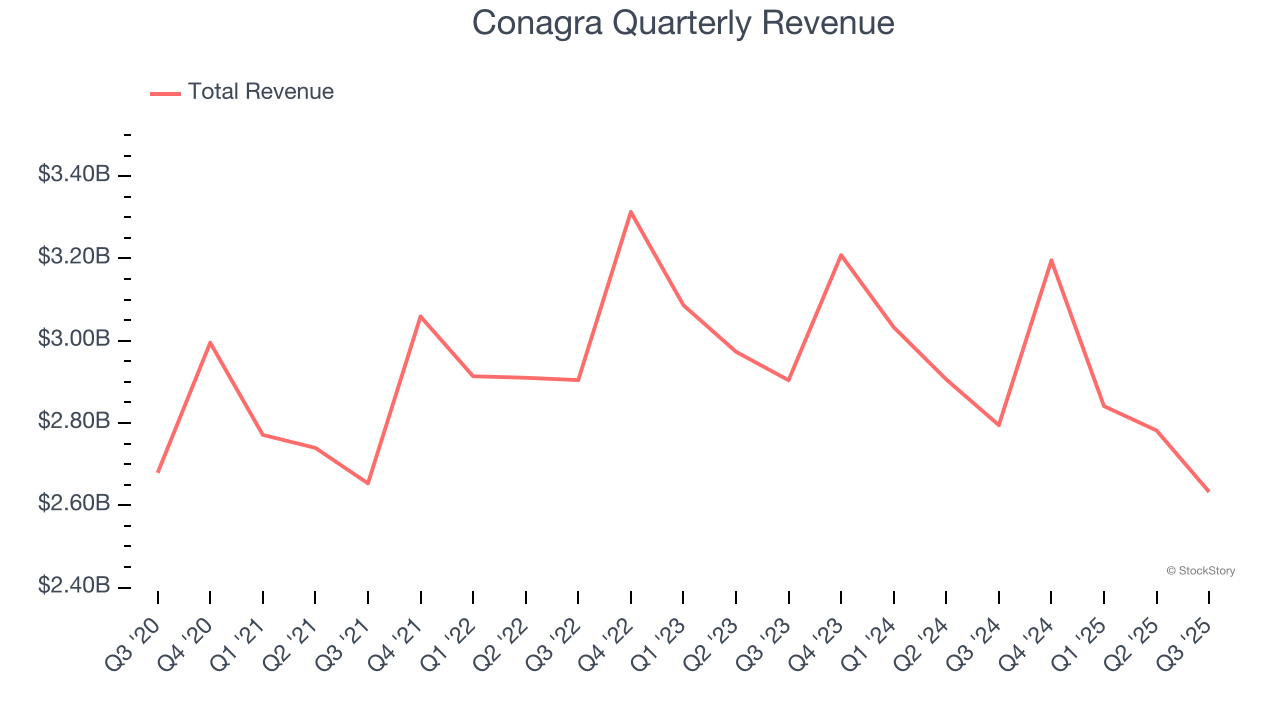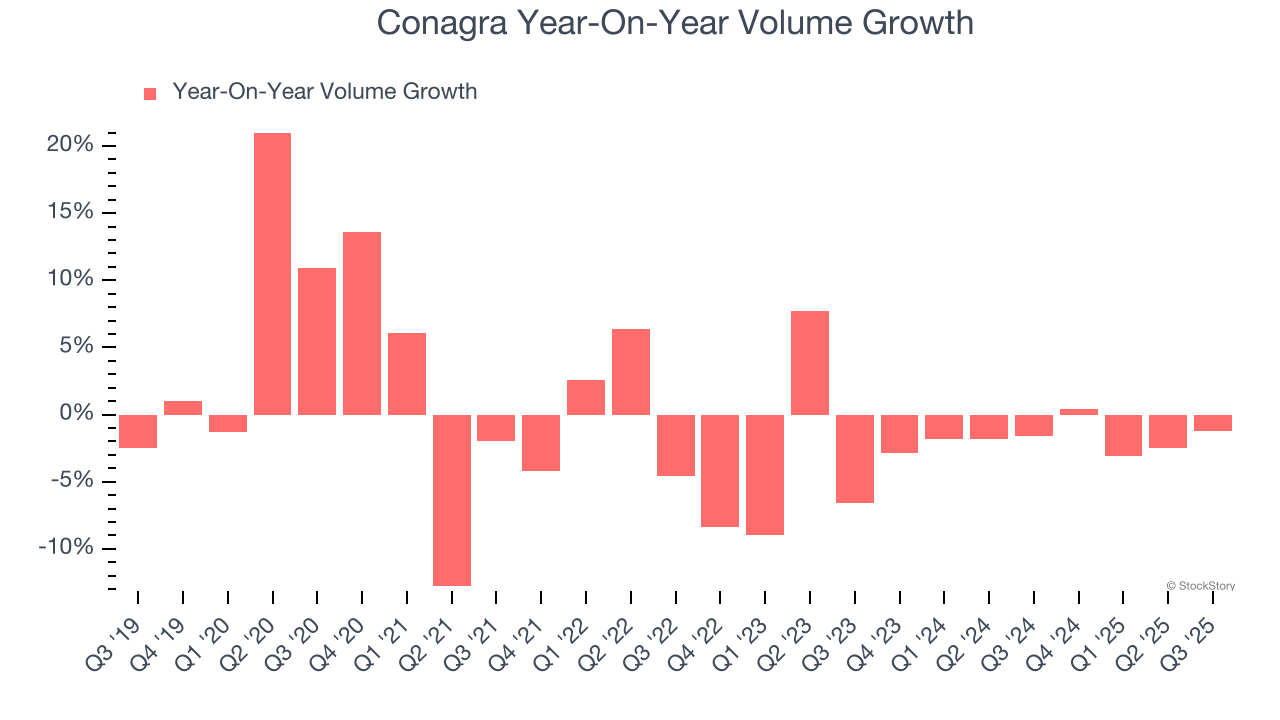
Packaged foods company Conagra Brands (NYSE: CAG) announced better-than-expected revenue in Q3 CY2025, but sales fell by 5.8% year on year to $2.63 billion. Its GAAP profit of $0.34 per share was in line with analysts’ consensus estimates.
Is now the time to buy Conagra? Find out by accessing our full research report, it’s free.
Conagra (CAG) Q3 CY2025 Highlights:
- Revenue: $2.63 billion vs analyst estimates of $2.61 billion (5.8% year-on-year decline, 0.7% beat)
- EPS (GAAP): $0.34 vs analyst estimates of $0.34 (in line)
- Operating Margin: 13.2%, down from 14.4% in the same quarter last year
- Free Cash Flow was -$26.2 million, down from $135.6 million in the same quarter last year
- Organic Revenue was flat year on year vs analyst estimates of 1.9% declines (128.6 basis point beat)
- Sales Volumes fell 1.2% year on year, in line with the same quarter last year
- Market Capitalization: $8.77 billion
Company Overview
Founded in 1919 as Nebraska Consolidated Mills in Omaha, Nebraska, Conagra Brands today (NYSE: CAG) boasts a diverse portfolio of packaged foods brands that includes everything from whipped cream to jarred pickles to frozen meals.
Revenue Growth
A company’s long-term sales performance is one signal of its overall quality. Even a bad business can shine for one or two quarters, but a top-tier one grows for years.
With $11.45 billion in revenue over the past 12 months, Conagra is one of the larger consumer staples companies and benefits from a well-known brand that influences purchasing decisions. However, its scale is a double-edged sword because there are only a finite number of major retail partners, placing a ceiling on its growth. To expand meaningfully, Conagra likely needs to tweak its prices, innovate with new products, or enter new markets.
As you can see below, Conagra struggled to increase demand as its $11.45 billion of sales for the trailing 12 months was close to its revenue three years ago. This is mainly because consumers bought less of its products - we’ll explore what this means in the "Volume Growth" section.

This quarter, Conagra’s revenue fell by 5.8% year on year to $2.63 billion but beat Wall Street’s estimates by 0.7%.
Looking ahead, sell-side analysts expect revenue to decline by 2% over the next 12 months, similar to its three-year rate. This projection doesn't excite us and implies its products will see some demand headwinds.
Software is eating the world and there is virtually no industry left that has been untouched by it. That drives increasing demand for tools helping software developers do their jobs, whether it be monitoring critical cloud infrastructure, integrating audio and video functionality, or ensuring smooth content streaming. Click here to access a free report on our 3 favorite stocks to play this generational megatrend.
Volume Growth
Revenue growth can be broken down into changes in price and volume (the number of units sold). While both are important, volume is the lifeblood of a successful staples business as there’s a ceiling to what consumers will pay for everyday goods; they can always trade down to non-branded products if the branded versions are too expensive.
To analyze whether Conagra generated its growth (or lack thereof) from changes in price or volume, we can compare its volume growth to its organic revenue growth, which excludes non-fundamental impacts on company financials like mergers and currency fluctuations.
Over the last two years, Conagra’s average quarterly volumes have shrunk by 1.8%. This isn’t ideal for a consumer staples company, where demand is typically stable. In the context of its 2.6% average organic sales declines, we can see that most of the company’s losses have come from fewer customers purchasing its products.

In Conagra’s Q3 2026, sales volumes dropped 1.2% year on year. This result represents a further deceleration from its historical levels, showing the business is struggling to move its products.
Key Takeaways from Conagra’s Q3 Results
We liked that Conagra beat analysts’ organic revenue growth and gross margin expectations this quarter. On the other hand, EPS was just in line. Overall, we still think this was a decent quarter with some key metrics above expectations. The stock traded up 2.4% to $18.71 immediately after reporting.
Indeed, Conagra had a rock-solid quarterly earnings result, but is this stock a good investment here? We think that the latest quarter is only one piece of the longer-term business quality puzzle. Quality, when combined with valuation, can help determine if the stock is a buy. We cover that in our actionable full research report which you can read here, it’s free.






